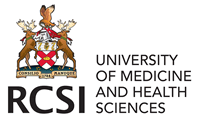Dr O Piskareva, Dr C Curtain, Dr F O'Brien, Prof D O'Shea
Applications accepted all year round
About the Project
The main challenge in treating neuroblastoma, a paediatric cancer of the sympathetic nervous system, is to combat tumour metastasis and resistance to multiple chemotherapeutic drugs highlighting the unmet need in new more efficient pre-clinical models to study disease pathogenesis, drugs testing and development. Immune therapy holds great promise as a treatment modality for paediatric
and adult cancers owing to the specificity of immune effector cells targeted to the tumour, potentially reducing the systemic side effects observed with other forms of treatment. In order to accurately study the interaction between immune and tumour cells, we need to develop an adequate 3D in vitro model system that mimics the native tumour microenvironment at the tissue level.
3D scaffold-based in vitro cell culturing is a recent advancement in cancer research bridging the gap between conventional 2D culture and in vivo tumours. A scaffold is a 3D matrix that provides the necessary support for cells to proliferate, differentiate, deposit extra-cellular matrix and respond to stimuli similar to in vivo biological systems.
To date, the collaborative efforts of Piskareva’s and Prof. O’Brien research groups led to the development of a 3D tissue-engineered tumour cell model using collagen-based scaffolds for neuroblastoma). Neuroblastoma cells displayed > 100-fold increased resistance to cisplatin treatment when compared to 2D cultures exhibiting chemosensitivity similar to orthotopic xenograft models. This 3D in vitro model demonstrated a physiological similarity to in vivo models, making evident the potential of this model to serve as a tool to elucidate neuroblastoma pathogenesis and for the development of new drugs. Therefore, by growing cancer cells on the 3D scaffolds and allowing the formation of ‘tumour mass’, the shortcomings of using 2D cultured cells can be overcome as minimal communication networks and cellular gradients observed within in vivo tumours are re-established.
Here, we suggest advance the current model to study tumour – immune system interactions by characterization of the microenvironment in 3D using a panel of neuroblastoma cell lines with distinct genomic and biological characteristics and incorporating cellular and molecular components of the immune system. Neuroblastoma cell death will be examined by real-time using a patented RCSI Amphiphilic NIRFluorescent Probe developed in Prof. O’Shea’s lab and optimized to label neuroblastoma cells. This fluorophore permits real-time imaging of cellular uptake, trafficking and efflux without perturbing function. The combination of new generation of fluorophore and 3D in vitro culturing will allow to mimic the tumour immune interactions and to test the response of the platform to anti-GD2 immunotherapy, which entered clinical trials for children with high-risk neuroblastoma.
The major ambitions and aspiration for this project are:
• the development of a new 3D tumour tissue engineered model to study tumour - immune system interactions;
• the reduction and/or replacement of live animals and provide a new platform for pre-clinical testing; RCSI StAR INTERNATIONAL PhD PROGRAMME Research Projects
• the acceleration of the paediatric cancer drug development process leading to more effective and tailored therapies.

 Continue with Facebook
Continue with Facebook

